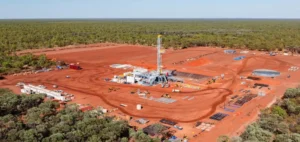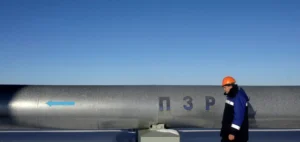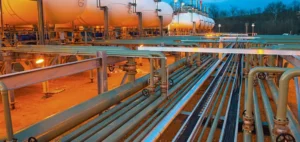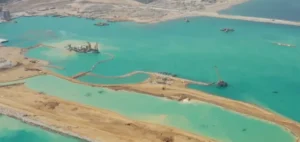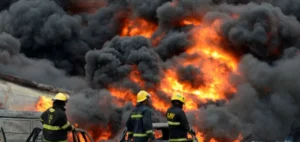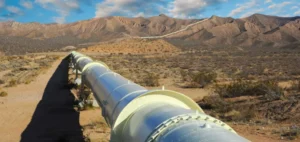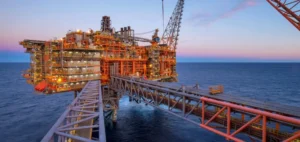Russia is suffering the consequences of the war in Ukraine on its gas trade with Europe, a major source of revenue for the Kremlin for decades. The combination of Western sanctions and Russia’s decision to significantly reduce its energy exports has had a negative impact on the country’s energy exports. While the sanctions have affected all of Russia’s energy trade, gas exports have been more severely impacted.
Losses for the Russian economy
The war in Ukraine and Western sanctions have severely affected the Russian economy, especially gas exports. Russia’s gas exports have been sharply reduced, with significant consequences for the country’s revenues. The figures show that Gazprom’s export revenues fell from $6.3 billion in January 2021 to $3.4 billion in January 2022. According to Reuters estimates, combined with export forecasts and average gas prices, this means that its export revenues will be almost halved this year. This contributes to Russia’s $25 billion budget deficit in January.
The role of Europe
The President of the European Commission, Ursula von der Leyen, estimated that Russia had reduced its gas deliveries to the European Union (EU) by 80% in the eight months since the start of the conflict in Ukraine. As a result, at the end of last year, Russia supplied only 7.5% of Western Europe’s gas needs, compared to about 40% in 2021. Before the conflict, Russia was convinced to sell more to Europe, not less.
In addition, transportation was weakened last year after explosions on the Nord Stream pipelines linking Russia to Germany. The several thousand kilometer long pipeline was the basis for gas trade between Russia and Europe until last year. However, the EU now accounts for a very small share of Russia’s gas consumption. As a result, gas transport capacities were undermined last year after mysterious explosions in the Baltic Sea at the Nord Stream pipeline. As a result, Russia is looking for new outlets for its gas, particularly in China, while seeking to diversify its gas production. This has resulted in losses for Gazprom and poses challenges for the Russian economy in general.
The stakes of Russia’s gas sales negotiations
To make up for this loss of the European market, the Kremlin is seeking to diversify. Russia’s policy of diversifying its gas markets began before the war in Ukraine began, but has gained momentum since. In October, Vladimir Putin proposed the idea of a gas hub in Turkey to divert Russian gas flows from the Baltic Sea and Northwest Europe. Moscow is also seeking to boost its pipeline gas sales to China, the world’s largest energy consumer and the largest buyer of crude oil, liquefied natural gas (LNG) and coal.
Supplies began via the Power of Siberia pipeline in late 2019 and Russia aims to increase annual exports to about 38 billion cubic meters from 2025. Russia also has an agreement with China for an additional 10 billion cubic meters per year from a pipeline to be built from the Pacific island of Sakhalin, while Russia is also developing plans for Power of Siberia 2 from western Siberia, which could theoretically provide an additional 50 billion cubic meters per year to China.
Russia’s challenges
However, Russia faces many challenges. Negotiations with China on new gas sales are expected to be complex, especially since China is not expected to need additional gas until 2030, industry analysts said.
Gazprom and China have kept their agreement on gas prices for 2022 secret. Ron Smith, an analyst with Moscow-based brokerage firm BCS, expects the price to average $270 per 1,000 cubic meters, well below prices in Europe and Gazprom’s export price of $700 per 1,000 cubic meters forecast by the Russian Ministry of Economy. Gazprom’s LNG, which can be shipped anywhere in the world, has further reduced the need for pipeline gas. However, Western price caps introduced in December and earlier this year are designed to further erode Russia’s revenues.
Russia also faces much greater competition from renewable energy than before, as the world seeks to limit the impact of climate change, as well as competitive pipeline gas supplies to China, particularly from Turkmenistan. LNG, which can be shipped anywhere in the world, has also reduced the need for pipeline gas.
Russia faces considerable challenges in making up for losses incurred due to the war in Ukraine and Western sanctions. Russia’s gas exports have been sharply reduced, resulting in a significant drop in the country’s revenues. Russia is now trying to diversify its gas markets, notably in China via the Power of Siberia pipeline, and is engaged in the construction of a new pipeline to Turkey and the possible operation of another pipeline to China. Despite efforts to find new trading partners, Europe remains the Kremlin’s largest energy consumer and supplier. If they are able to replace their losses with new sales, they will be able to maintain their economic and political position internationally.




